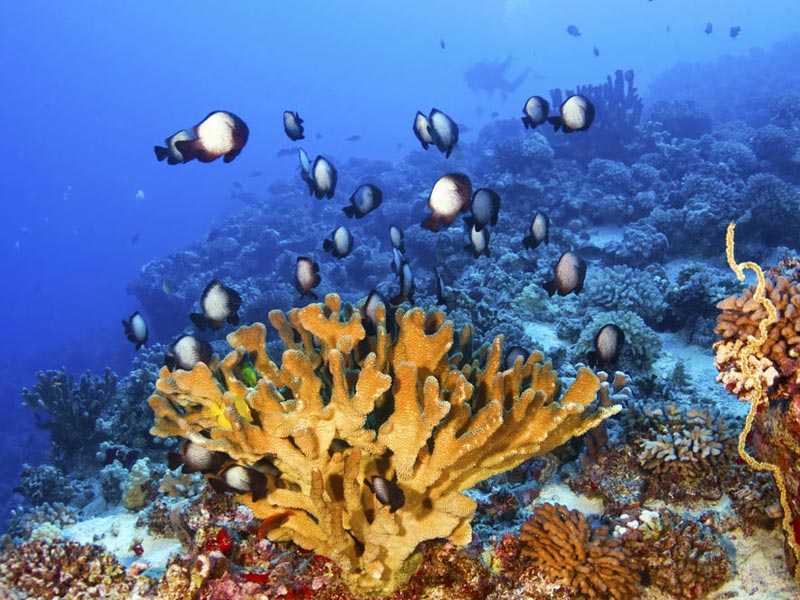Hawaiian Damselfish
ʻāloʻiloʻi
Dascyllus albisella
Damselfish are often most abundant in shallow habitats, and these small to medium-sized fish gather above coral heads or swarm in midwater near dropoffs. Damselfish can be brightly colored or plain, and some are social and others are solitary. A primary characteristic is they possess only one nostril instead of two. These fish feed on plankton or algae. Plankton eaters typically hover in groups above the reef as they feed on their tiny prey. Algae eaters are generally solitary fish that inhabit the shallow, rocky areas where algae grows the most. All damselfish attach their eggs to the bottom and guard them until they hatch. Some juvenile damselfish are more vibrantly colored than their parents. Hawai'i has 14 species of damselfish.
The Hawaiian Damselfish juveniles are jet black with a porcelain-white spot on the forehead. They are typically found in and around heads of branching coral. They will leave the coral to live in loose aggregations in deeper water as they grow. The adult Hawaiian Damselfish will lose the white forehead spot and their black fades to grayish. The white spot on their side becomes less distinct. These fish are able to lighten or darken their coloring. They become almost entirely white when they spawn. Females lay eggs on the bottom as males follow behind fertilizing them. They makes chirping sounds when they are disturbed.
Snorkelers can experience these lively fish in very sheltered and shallow locations. They sometimes reside in association with sand-dwelling anemones. In areas exposed to even moderate waves, one must dive 20 to 30 feet to see them. The species name is from albus ("white"), and the Hawaiian name means "bright and sparkling".
